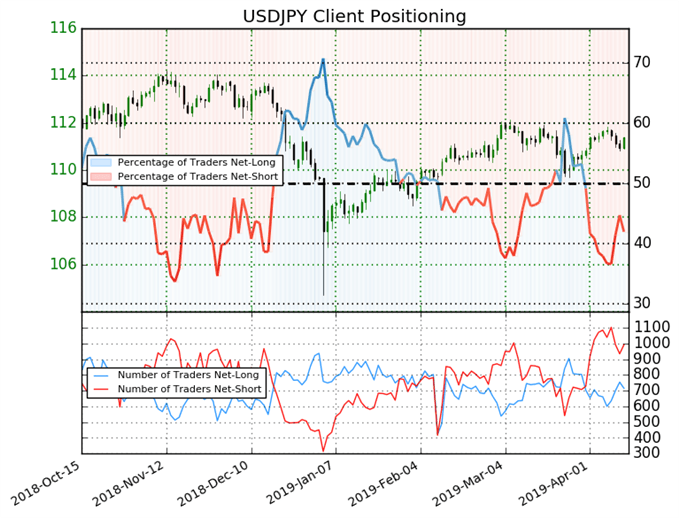
41.9% OF TRADERS ARE NET-LONG
USDJPY: Retail trader data shows 41.9% of traders are net-long with the ratio of traders short to long at 1.39 to 1. In fact, traders have remained net-short since Mar 31 when USDJPY traded near 110.941; price has moved 0.4% higher since then. The number of traders net-long is unchanged than yesterday and 4.7% higher from last week, while the number of traders net-short is 6.5% lower than yesterday and 9.3% lower from last week.
To gain more insight in how we use sentiment to supplement a strategy, join us for one of our weekly webinars on how to “Identify Trends with Sentiment”:
(click on one of the above times to enroll)
USDJPY: PRICE TREND MAY SOON REVERSE
We typically take a contrarian view to crowd sentiment, and the fact traders are net-short suggests USDJPY prices may continue to rise. Yet traders are less net-short than yesterday and compared with last week. Recent changes in sentiment warn that the current USDJPY price trend may soon reverse lower despite the fact traders remain net-short.
--- Written by Nancy Pakbaz, CFA, DailyFX Research
Follow Nancy on Twitter @ NancyPakbazFX






